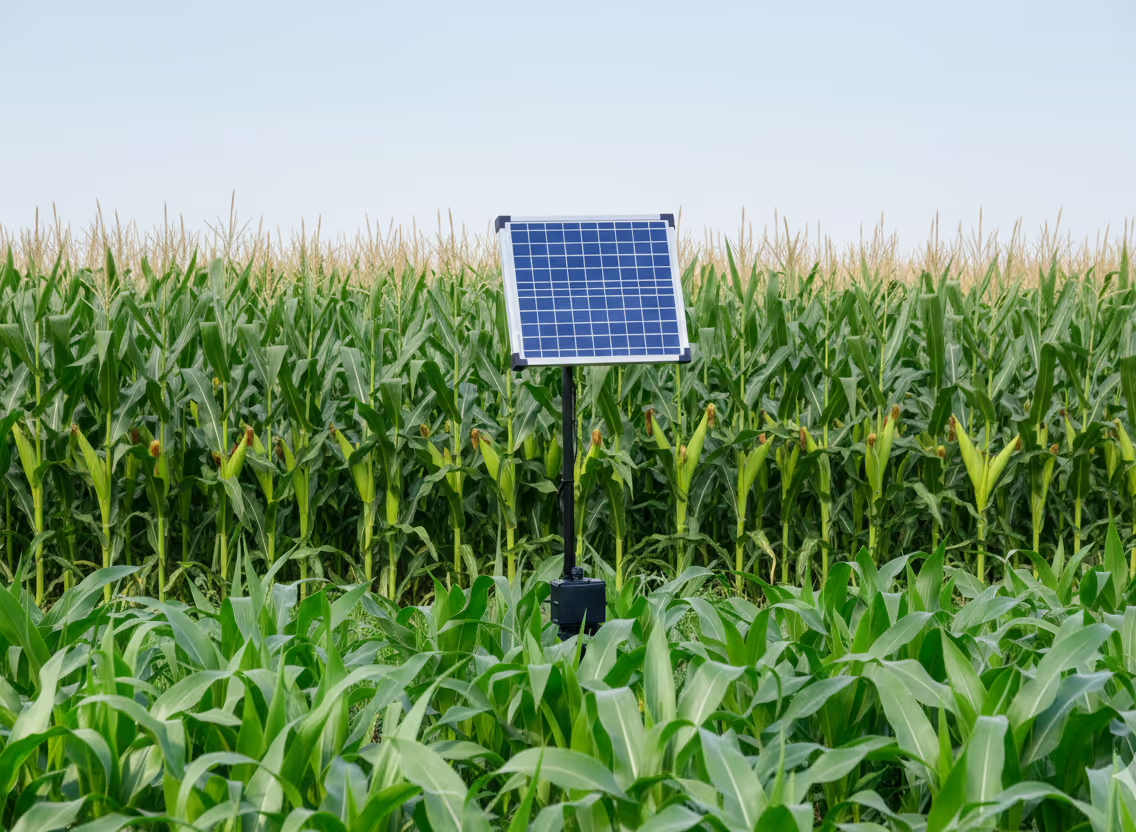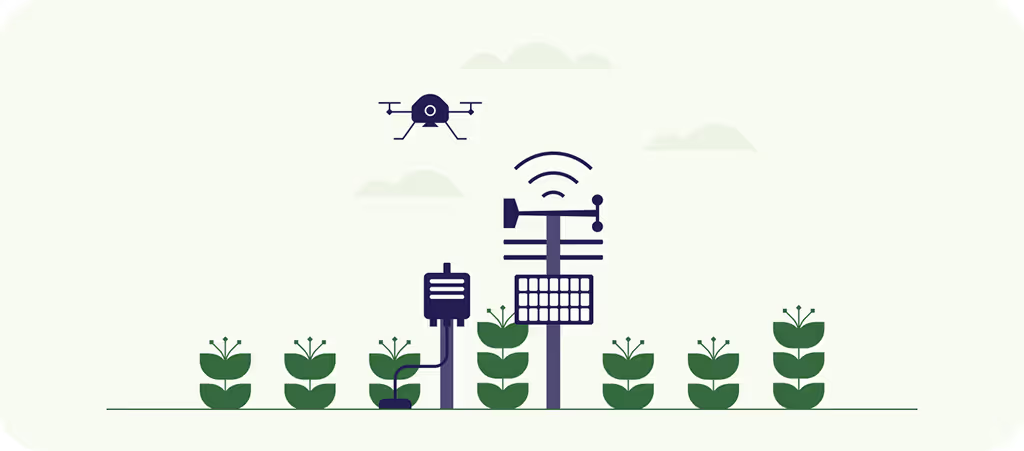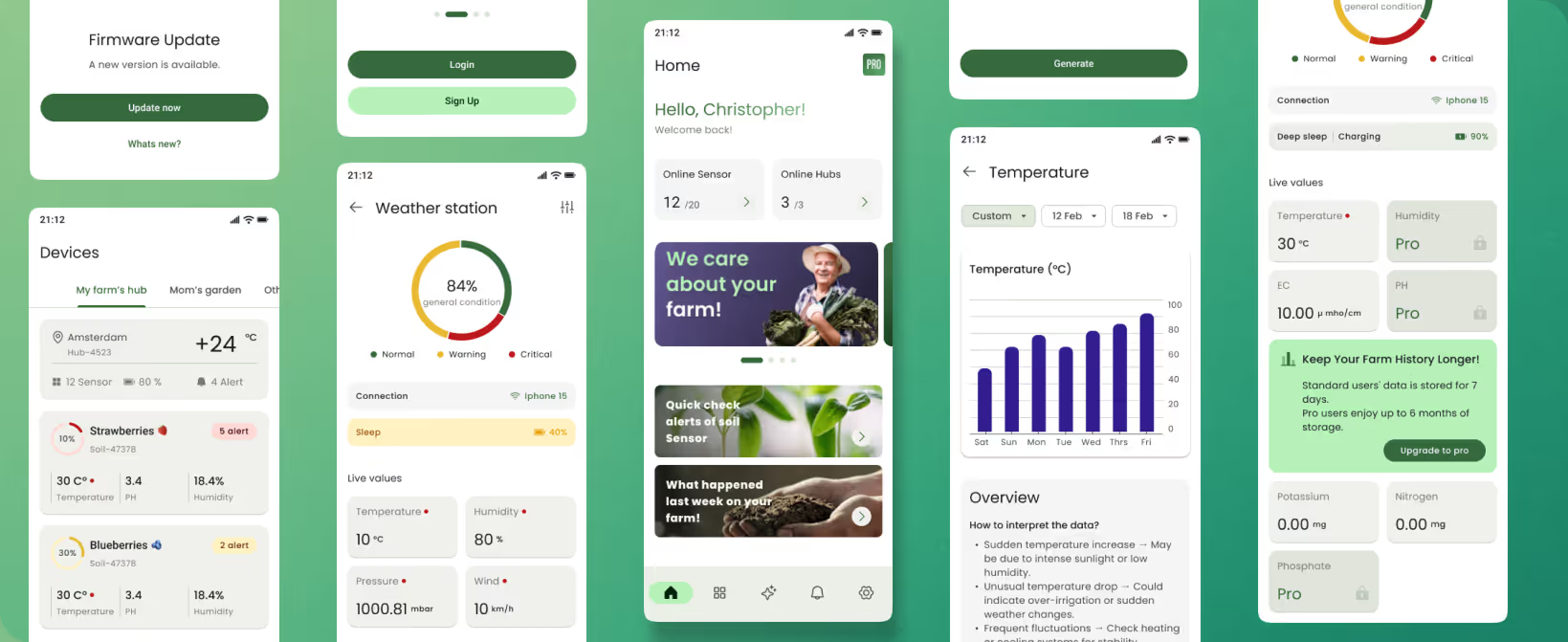It began with the soil.
In the rice paddies of the southern coast of the Caspian Sea, farmers told us the same story we later heard from tea growers, herb cultivators, and even European smallholders: the earth was changing, and they no longer knew how to keep up.
Unpredictable rains drowned fields one season and left them dry the next. Pests spread faster than pesticides can control them. Fertilizer costs rose, but yields didn’t. And while global discussions about “climate change” filled conferences, the people on the ground (those who live with the soil every day) were left with little more than intuition.
We asked ourselves a question: What if the soil could speak?
.avif)
.avif)
.avif)
Listening to the Fields
From that question came TERRA, an ecosystem of sensors, hubs, drones, and AI designed not to replace farmers, but to empower them.
We started with the basics: soil. Our prototypes were small, solar-powered devices designed to be placed directly in the fields. Weatherproof and resilient, each sensor measures seven parameters essential for crop health:
Moisture
Temperature
pH
Electrical conductivity
NPK (Nitrogen, Phosphorus, Potassium)


For the first time, the invisible life of the soil became data; numbers that could be tracked, compared, and understood.
These sensors could connect to a hub, a weather station powered by solar energy. The hub doesn’t just collect data. It acts. Relay boards allow it to automate irrigation or pest control systems, turning real-time insights into direct action.
All of this flows into the TERRA Link app, where farmers (whether managing two hectares of rice or fifty hectares of vineyards) can see clear dashboards, receive AI-driven recommendations, and get warnings before a problem becomes a crisis.
.avif)
Designed With Farmers in Mind
But technology alone isn’t enough. Farmers are not software engineers.
That’s why we designed TERRA Link in collaboration with them. We built prototypes in Figma, tested them with real farmers, and simplified every step.
Navigation: fewer clicks, larger icons, easy-to-read text.
Accessibility: multilingual from the start — English and Dutch, with more to come.
Trust: Besides the detailed reports, the app gives simple, actionable insights: “Irrigation can wait until tomorrow’s rainfall,” or “Pest risk detected, consider preventive action.”
Electrical conductivity
NPK (Nitrogen, Phosphorus, Potassium)
The feedback was clear: farmers wanted technology that respects their time and their knowledge.

Challenges That Shaped Us
The journey to TERRA wasn’t smooth.
We discovered early that cheap sensors fail in real-world conditions. Mud-clogged casings, rain-corroded circuits, and blazing sun warped materials. We invested in weatherproof enclosures, extended testing, and certifications to ensure a five-year lifespan.
Scalability was another challenge. Farms don’t all look alike: some need two sensors, others fifty. To solve this, we built an MQTT-based hub architecture, stress-tested with 50 sensors per hub, and reinforced by Redis caching for low-latency performance.
We also faced the human challenge: building trust in AI. Farmers wanted reassurance that recommendations weren’t “black box” guesses.
That’s why every AI suggestion is paired with context (“High humidity + 20°C = increased risk of pest activity”) so the farmer understands the why, not just the what.
Even our funding story reflects resilience. When development costs grew, we secured a €25k loan and a €9k R&D subsidy, backed by the Dutch government and supporters who believed in our vision.

The First Pilot
By the end of 2025, TERRA will enter its first pilot phase, involving 10 farms spread across different climates, crops, and scales in the Netherlands.
This pilot isn’t just a test of technology. It’s a dialogue. Each farmer’s feedback will shape TERRA’s evolution, ensuring the platform grows hand-in-hand with those who use it.

Looking Ahead
The soil sensor is just the first chapter.
Next comes hubs and drones, checking weather and scanning fields from above to detect crop health, animal intrusions, or early signs of disease invisible to the human eye. A one-month drone service will be offered to farmers, delivering AI-analyzed reports at a fraction of traditional costs.
By 2026, TERRA will combine ground-level sensors, aerial imaging, and AI models into a complete ecosystem, helping farmers see their fields from every angle, in every season.
Our roadmap is ambitious: €50k revenue in Year 1, €1.2 million by Year 4, and adoption across Europe’s 9 million farms. But numbers alone aren’t what drive us.
What drives us is the vision of a farmer opening the TERRA Link app in the morning, checking the soil health, planning irrigation with confidence, and knowing they’re saving water, protecting their crops, and contributing to a sustainable food system.
A Global Commitment
TERRA is not just a product. It’s a commitment to farmers, to communities, and to the planet.
By aligning with the UN Sustainable Development Goals, TERRA supports:
Innovation (SDG 9): Bringing IoT and AI to agriculture.
Responsible Consumption (SDG 12): Reducing waste of water and pesticides.
Climate Action (SDG 13): Helping agriculture adapt to a changing climate.
Our team is small, global, and driven, with engineers and designers working all around the world and farmers testing devices in the field. Together, we’re building more than hardware and software. We’re building trust between people and the earth.
.avif)
The Story Continues
TERRA began in the mud of a rice paddy. Today, it is moving into European farms. Tomorrow, it could transform agriculture worldwide.
Because farming is more than an industry. It’s our food, our water, our climate, our future.
And with TERRA, the earth finally has a voice.

.svg)











